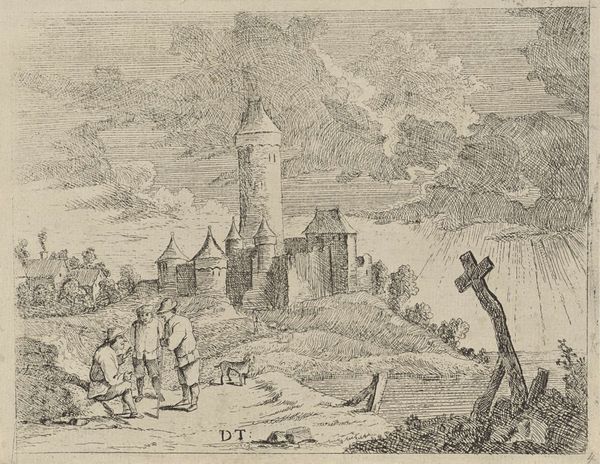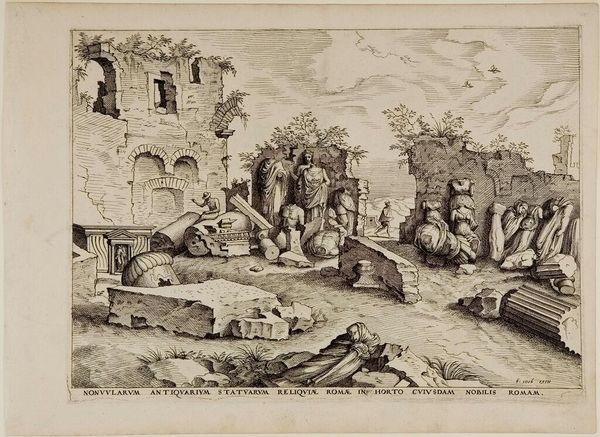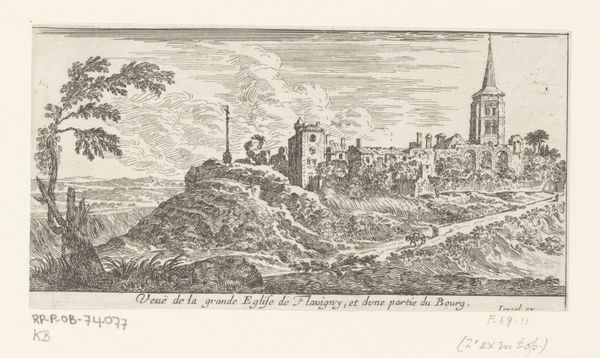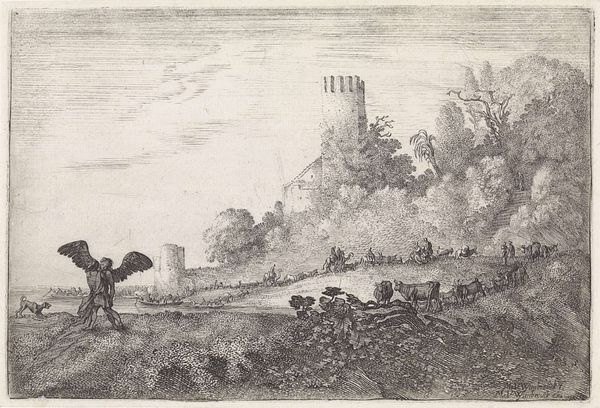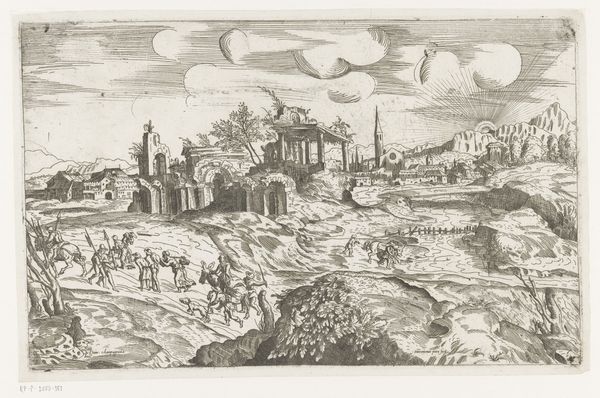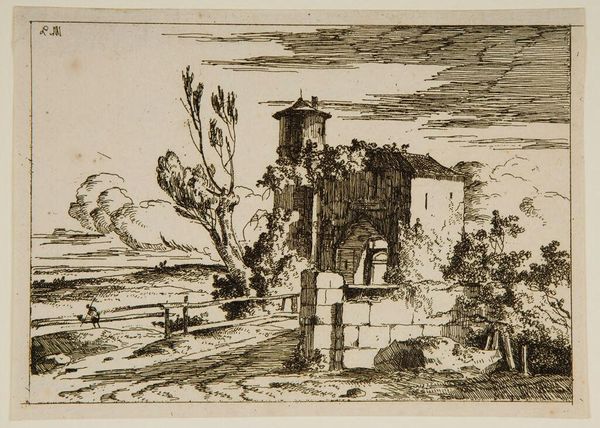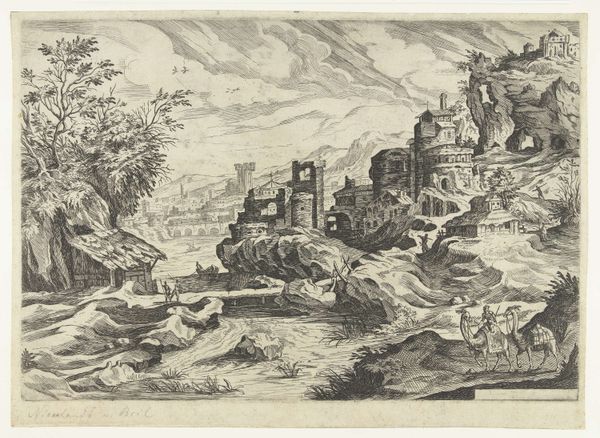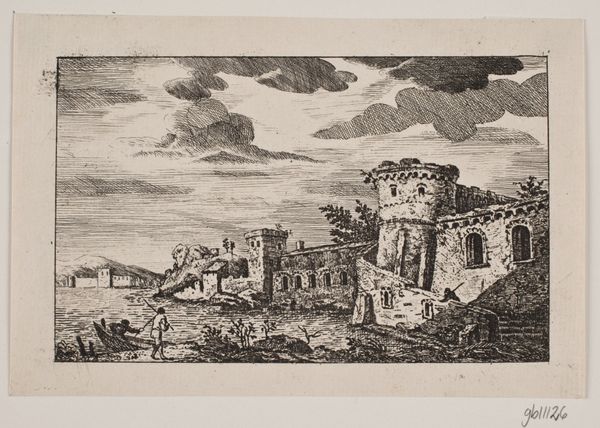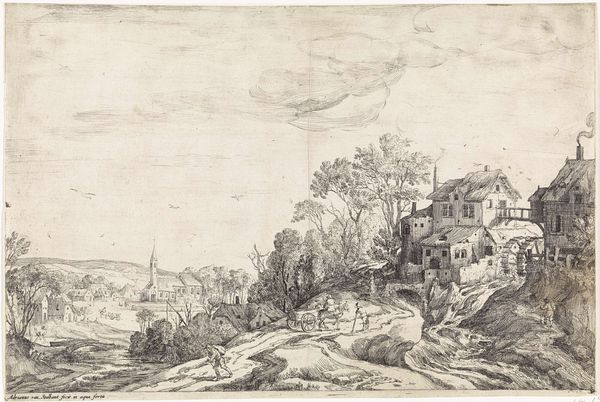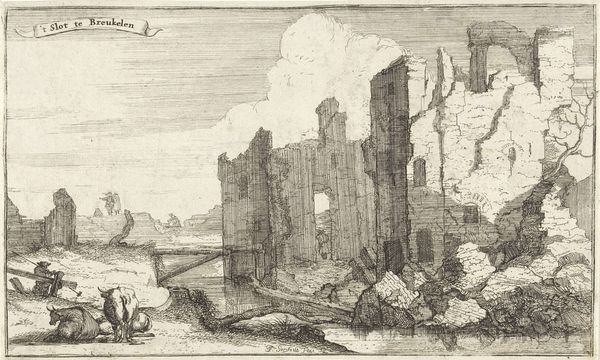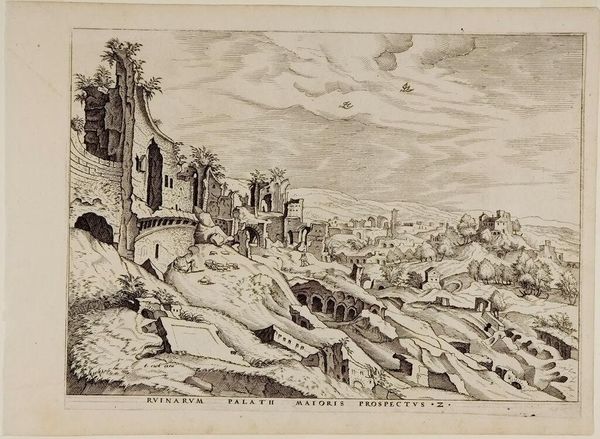
drawing, print, ink, pen, engraving
#
drawing
#
baroque
# print
#
pen sketch
#
landscape
#
figuration
#
ink
#
ink drawing experimentation
#
pen work
#
pen
#
history-painting
#
engraving
Dimensions: height 215 mm, width 308 mm
Copyright: Rijks Museum: Open Domain
Curator: Valentin Lefebvre created "Roof van Europa," sometime between 1680 and 1749. This artwork employs pen, ink, and engraving. What is your initial read of this striking landscape? Editor: The turbulent water dominates; it feels chaotic, almost apocalyptic. The details of the architecture are rendered so precisely, it contrasts intensely with the drama of the scene. Curator: This piece situates itself within the artistic conventions of Baroque landscape, yet pushes against them. Consider the title—"Roof van Europa"—the literal "roof," yet also perhaps suggesting Europe under threat, reflecting anxieties around shifting powers and societal vulnerabilities of that period. Editor: Absolutely, there’s a narrative here far beyond just a geographical depiction. Water often symbolizes the unconscious, or primal forces. And these figures in the foreground observing the turmoil—are they bystanders, complicit perhaps? Curator: Precisely. The female figures offer a positioning of the viewer to a female lens on the landscape, where they appear both as part of it, and apart. Consider, too, how Lefebvre uses printmaking to disseminate this anxiety across a wide audience, bringing the fears of upheaval to the forefront of collective consciousness. Editor: The tower in the distance... broken, partially collapsed. Towers can represent authority, stability. Its dilapidated state speaks volumes about societal anxieties—questioning the existing structures of power, almost a premonition. Curator: Indeed. Lefebvre's technical mastery allows for multiple layers of interpretation to be decoded; it reflects his sensitivity to the shifting geopolitical climate and the socio-political context of the time. By choosing a medium accessible to the masses, he incites questions and demands we see beyond the surface to unpack issues of identity, gender and politics during societal collapse. Editor: What lingers with me is the artist's visual language used for evoking unrest, and to create an uneasy viewing experience with symbols and imagery that continue to resonate through cultural memory. Curator: Thank you. Hopefully our observations invite further dialogue on art history and how images interact within their socio-historical moment, particularly where societal anxieties intersect.
Comments
No comments
Be the first to comment and join the conversation on the ultimate creative platform.

